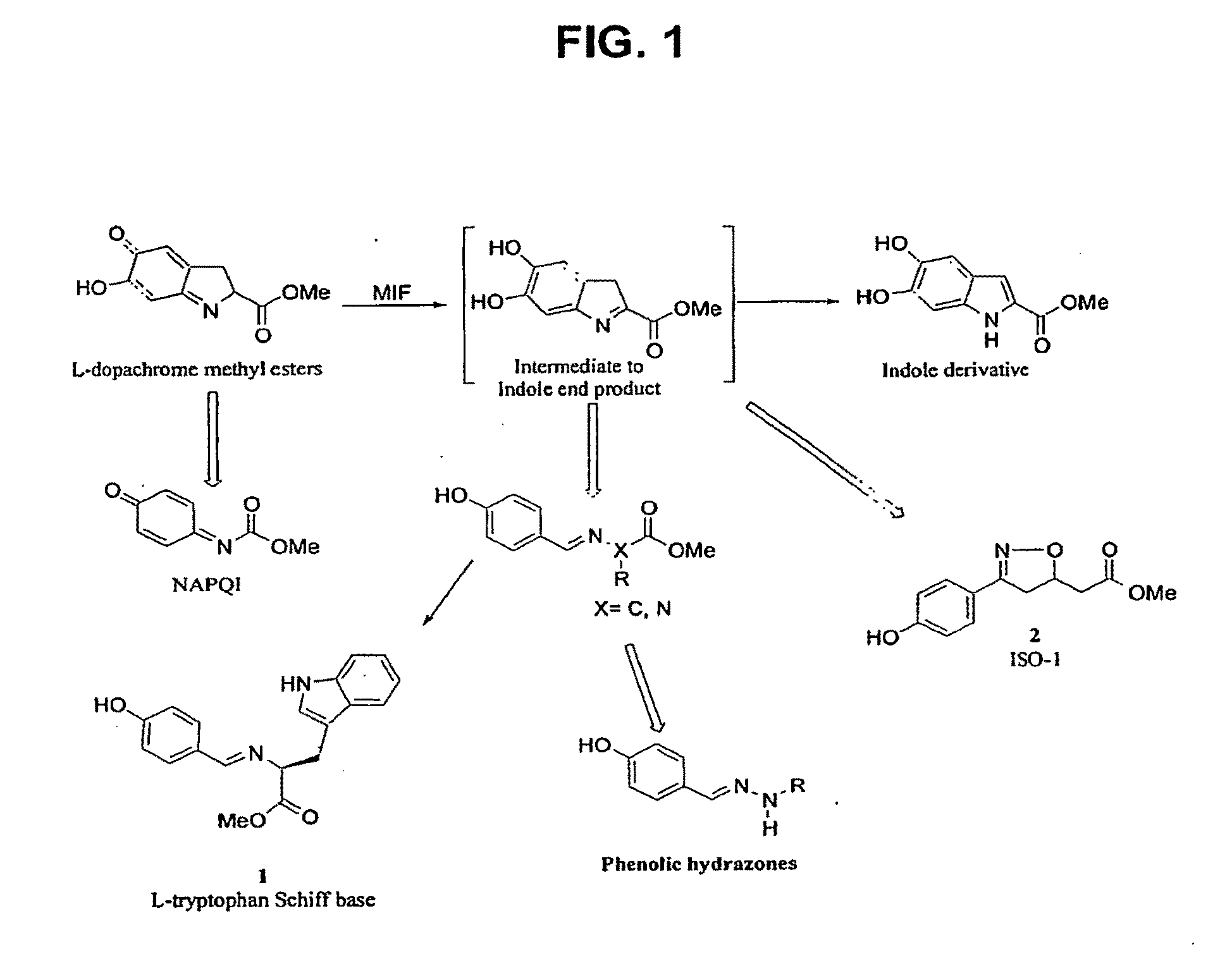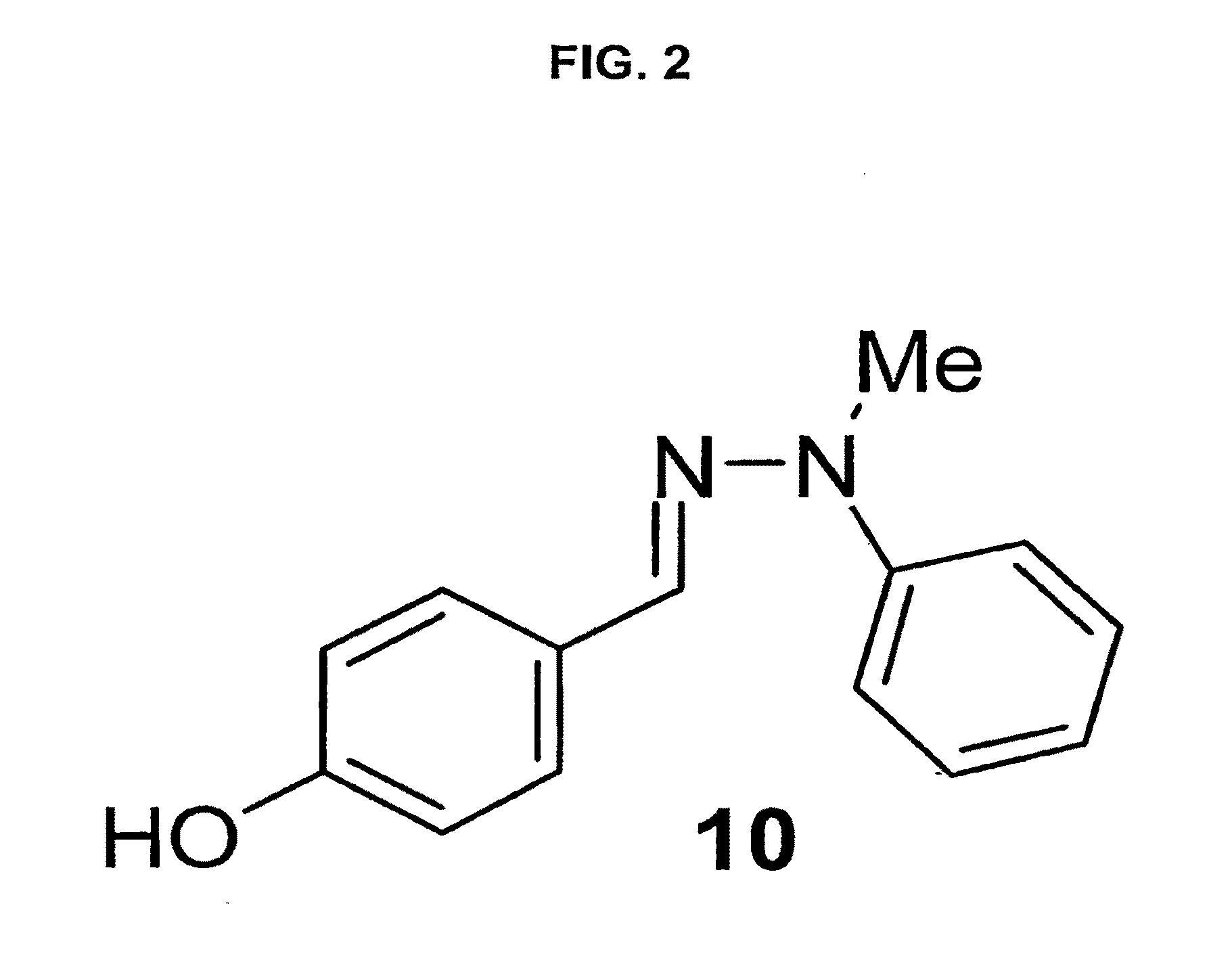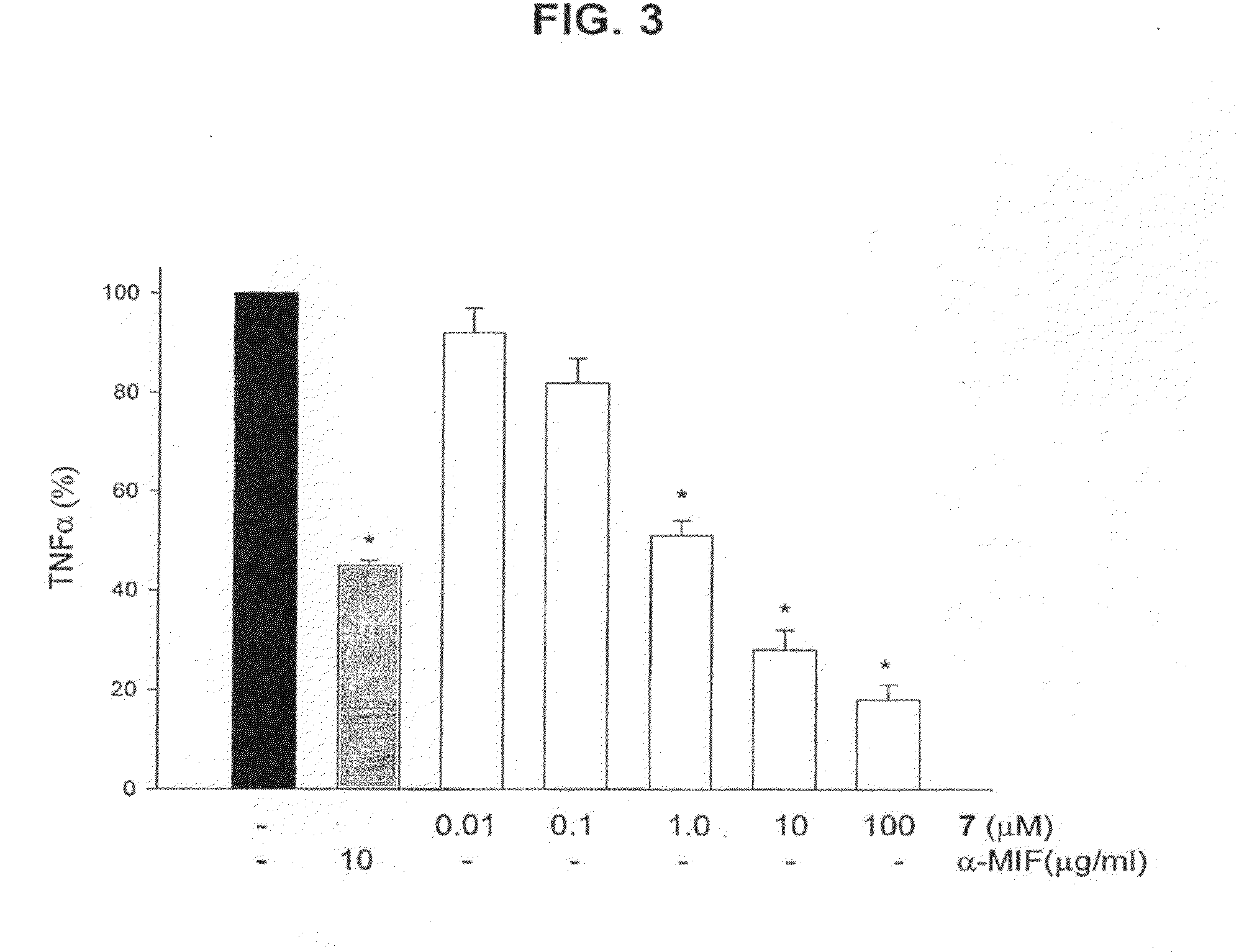Phenolic Hydrazone Macrophage Migration Inhibitory Factor Inhibitors
a technology of macrophage migration and inhibitory factor, which is applied in the field of inhibitors can solve the problems of no anti-inflammatory therapeutic agent that is approved, napqi precludes its use as a viable clinical inhibitor, etc., and achieves the effect of inhibiting the activity of macrophage migration inhibitory factor (mif) and inhibiting the activity of mif in the mammal
- Summary
- Abstract
- Description
- Claims
- Application Information
AI Technical Summary
Benefits of technology
Problems solved by technology
Method used
Image
Examples
example 1
Phenolic Hydrazones are Potent Inhibitors of Macrophage Migration Inhibitory Factor Proinflammatory Activity and are Survival-Improving Agents in Sepsis
example summary
[0053]A series of phenolic hydrazones were synthesized and evaluated for their inhibition of MIF activity. Compound 7 emerged as a potent inhibitor of MIF tautomerase with an IC50 of 130 nM. Compound 7 dose-dependently suppressed TNFα secretion from lipopolysaccharide-stimulated macrophages. The therapeutic importance of the MIF inhibition by compound 7 is demonstrated by the significant protection from the lethality of sepsis when administration of the compound was initiated in a clinically relevant time frame.
Introduction
[0054]A rational design approach was used to produce a more potent, small molecule inhibitor of MIF. The indole intermediate of MIF tautomerase catalysis presented itself as a suitable template for the development of potential MIF inhibitors. It was reasoned that compounds designed around the phenyl imine scaffold could act as potential MIF antagonists. Indeed, from this rational design the amino acid Schiff bases and the isoxazoline compounds as MIF tautomerase i...
example 2
Effect of Compound 7 on Leukocyte Recruitment in Response to Acute Inflammation
[0089]Air pouches were made according to standard procedures (Garcia-Ramallo et al., 2002) on Swiss Webster male mice (25-30 g) by injecting sterile air s.c. on day 0 (6 ml) and day 3 (3 ml). On day 6, animals were treated with vehicle (350 μl of 20% DMSO) or compound 7 (7 mg / kg) either intraperitoneal (i.p.) or gavage (oral) as indicated. After 15 min, the animals were challenged by injecting 1 ml 1% carrageenan (in PBS) into the air pouch cavity. Five hrs after carrageenan injection the animals were sacrificed, the pouches washed with PBS, exudate collected, and the total number of infiltrating cells quantitated. The plot shows the number of cells normalized to that seen with vehicle alone (veh.).
[0090]Results are shown in FIG. 5. Both the i.p. and oral treatments with compound 7 showed a significant reduction in leukocyte recruitment in response to the inflammation caused by the carrageenan treatment i...
PUM
| Property | Measurement | Unit |
|---|---|---|
| Molar density | aaaaa | aaaaa |
| Molar density | aaaaa | aaaaa |
| Molar density | aaaaa | aaaaa |
Abstract
Description
Claims
Application Information
 Login to View More
Login to View More - R&D
- Intellectual Property
- Life Sciences
- Materials
- Tech Scout
- Unparalleled Data Quality
- Higher Quality Content
- 60% Fewer Hallucinations
Browse by: Latest US Patents, China's latest patents, Technical Efficacy Thesaurus, Application Domain, Technology Topic, Popular Technical Reports.
© 2025 PatSnap. All rights reserved.Legal|Privacy policy|Modern Slavery Act Transparency Statement|Sitemap|About US| Contact US: help@patsnap.com



